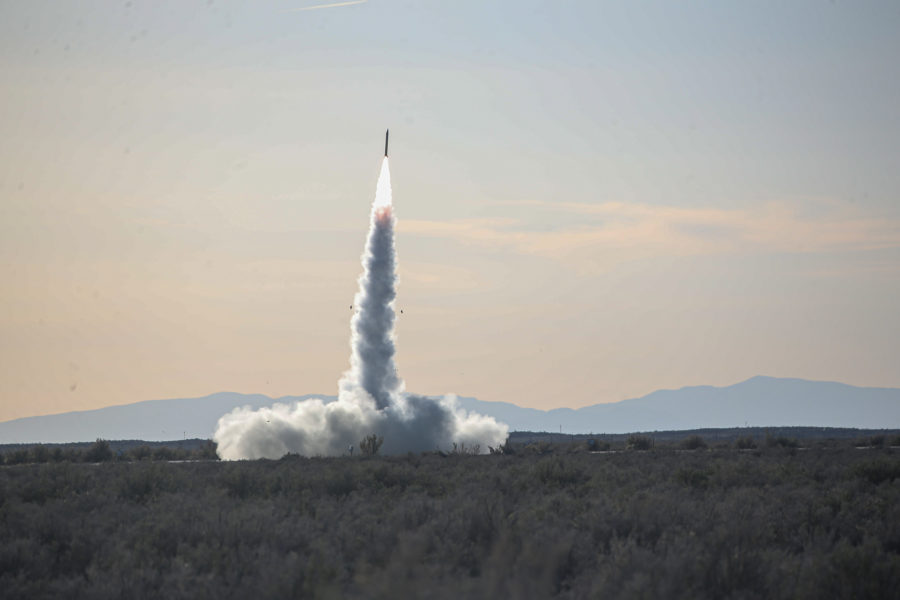The Pentagon announced a new $400 million aid package to Ukraine on July 8 to include four more High Mobility Artillery Rocket Systems (HIMARS) and high-precision ammunition, but a senior defense official said delivery of promised air defenses is still “several months” away.
The senior defense official briefed Pentagon reporters ahead of a White House announcement of the new presidential drawdown, or transfer of U.S. weapons stocks to Ukraine, that is tailored to current battlefield needs for high-precision artillery to fight Russia in the Donbas region.
“The focus [is] on higher-capability, precision, further-range weapons,” the official said, citing recent Ukrainian successes using HIMARS and Multiple Launch Rocket Systems (MLRS) to target Russian command-and-control and logistics nodes up to 30 miles behind the front line.
The aid package consists of four additional HIMARS to add to the eight already on the battlefield; three tactical vehicles to recover equipment; 1,000 rounds of high-precision 155 mm artillery rounds; and spare parts to keep previously donated equipment operational.
While Russia continues to make incremental advances in Ukraine’s east, the official said each grinding Russian victory comes at a heavy cost.
“The Russians are making very, very incremental, limited, hard-fought, highly costly progress in certain, select, small spaces in the Donbas,” the official said. “What we’ve seen is the ability of the Ukrainians to use these HIMARS systems to significantly disrupt the ability of the Russians to move forward, even where they make that grinding, slow offensive.”
The successful targeting of Russian nodes has also affected resupply of forces as Russia appears to take an operational pause to rest and reconstitute its forces after taking heavy casualties in recent weeks. In the meantime, the United States has trained more than 100 Ukrainians to operate the donated HIMARS.
For Ukraine’s recent precision artillery success, the air defense picture has remained static 135 days into the conflict.
Ukraine is often praised by DOD officials for its skillful employment of legacy Soviet systems to deny Russia air superiority, but in recent weeks, Russian missiles have struck civilian targets, and the Ukrainian Air Force remains limited in the sorties it can fly amid near-total Russian surface-to-air missile coverage.
A July 1 promise by President Joe Biden to buy and deliver sophisticated new National Advanced Surface-to-Air Missile Systems (NASAMS), the same used to protect the U.S. capital, still has no delivery date.
“It’s several months,” the defense official said in response to a question from Air Force Magazine. “I can’t give you details of where it is in the contracting process. But, you know, we don’t see any challenges.”
A senior military official who briefed defense reporters later in the day likewise discussed the air picture in Ukraine, saying it’s “still contested space.”
“Ukrainians continue to fly,” the official said. “The Russians certainly are continuing to fly. But the Russians certainly have not claimed any kind of air superiority over Ukraine.”
While the military official acknowledged that Russia has consolidated control of the Luhansk region of the Donbas, the official said it was at heavy cost and likely requires an operational reconstitution of forces.
“The Ukrainians made them pay for that land pretty hard,” the official said, while declining to provide precise numbers. “I’ve got to think that if I took the number of casualties that the Russians took to gain that portion of ground, I’d probably have to stop and refit.”
Both officials painted a picture of a grinding war with heavy casualties on both sides—but one that has seen Russia lose many more soldiers only to take control of mostly evacuated villages leveled by their own antiquated artillery.
The senior defense official said future aid packages now discussed by DOD and partners include more coastal defense and air defense systems that move away from Soviet-era air defenses.
The timeline for providing the aid is also shifting.
“We’re ready for and thinking about Ukraine’s needs over months and years,” the official said.
